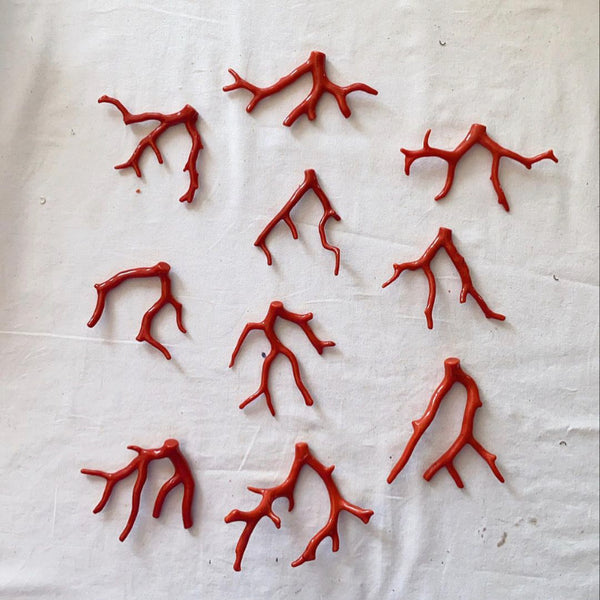
The History of Coral
The history of coral and its use in jewellery is a long standing one. This material has fascinated civilisations for millennia, and the myths regarding its origins are numerous.
In Ancient Greece, coral was believed to have been born from the blood of Medusa, the Gorgon slain by Perseus. In Roman times, it was believed to ward off evil spirits and bring good fortune. Across cultures, from the Celts to the Egyptians, coral was seen as a link between the earthly and the divine, often used in religious ornaments and burial rites.

.
The History of Coral in Jewellery: From Antiquity to Today
Origins and Early Uses
Coral's earliest known use dates back to prehistoric times, where it was valued for its natural beauty and believed to hold mystical properties. In ancient Egypt, coral was placed in tombs as a protective amulet, while in Mesopotamia and the Mediterranean, it was carved into beads and talismans.
Ancient Greece and Rome
The Greeks and Romans highly prized coral, associating it with protection and vitality. Romans used coral extensively in jewellery, amulets, and even children's accessories to ward off the evil eye. Pliny the Elder wrote about coral’s value, particularly its use in trade and medicine.
The Middle Ages: Symbolism and Protection
During the medieval period, coral retained its protective reputation. It was believed to keep safe from illness, poison, and malevolent forces. It was commonly set in religious jewellery, rosaries, and relics, often paired with gold or silver. Coral was also worn by children to protect them from harm.

The Renaissance: Art, Luxury, and Trade
The Renaissance saw a revival of classical art and a renewed appreciation for coral in jewellery. It became a symbol of wealth and sophistication, especially among European nobility. The Italian coral trade flourished, particularly in Sicily and Naples, where artisans perfected carving techniques which are still used today to carve Vellutini's coral. It was used in elaborate necklaces, brooches, and cameos, often set in gold and adorned with pearls or precious stones.
Modern Times
During the 18th and 19th centuries, coral harvesting and jewellery-making reached new heights, particularly in Italy and France. Coral workshops in Torre del Greco, Naples, became world-renowned for their craftsmanship. Napoleon Bonaparte’s campaigns in Italy further popularised coral jewellery in France, making it a staple of fine jewellery during the Empire era.
The 20th century saw a decline in natural coral due to overharvesting and environmental concerns. However, in recent years, sustainable coral farming and ethical sourcing have revived its presence in jewellery. In Corsica, artisans continue to incorporate coral in traditional and contemporary designs, preserving its cultural heritage while adapting to modern aesthetics.

Various representation of Coral in painting details
From left to right : Giovanni da Modena (15th century), Joos van Cleve (16th century), Unknown, Pierre Mignard (17th century)
Coral in Corsica: A Special Tradition
In Corsica, coral has held a deep cultural and symbolic significance for centuries. The island, rich in Mediterranean coral reefs, became an important hub for coral harvesting. Corsican families often passed down coral jewellery as heirlooms, believing it to protect against misfortune. Women wore coral necklaces as part of their traditional attire, and newborns were gifted coral amulets to ensure good health and luck. To this day the tradition persists.
Vellutini Lingerie draws inspiration from these rich narratives, weaving coral’s essence into our lingerie designs. Whether through delicate embroidery, the warm hues reminiscent of its colour -so specific to the Mediterranean-, or the artisanal craftsmanship that defines our brand, coral serves as a bridge between history, mythology, and modern elegance. Each piece tells a story—one of femininity, protection, and timeless beauty. Discover them now.

